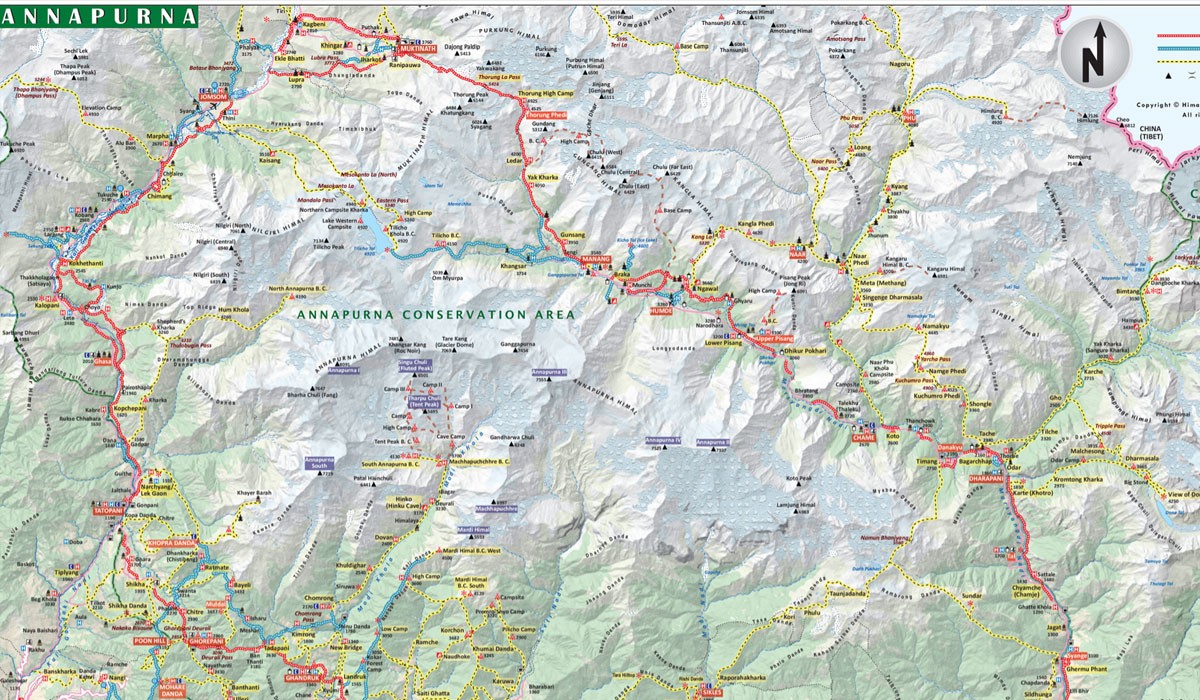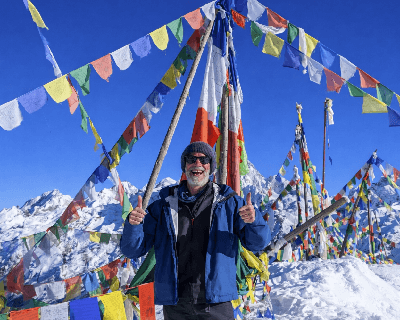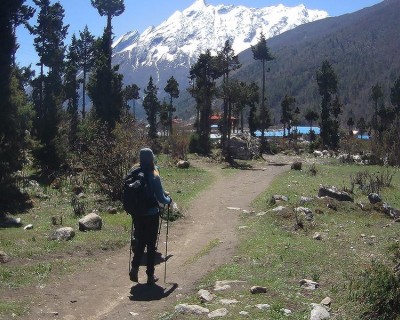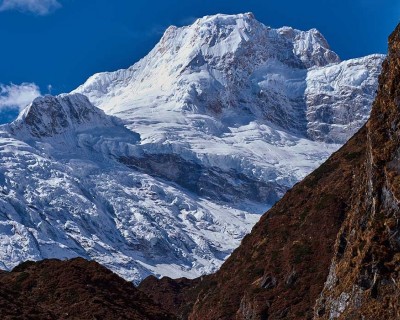Annapurna Circuit Map- Itinerary Route
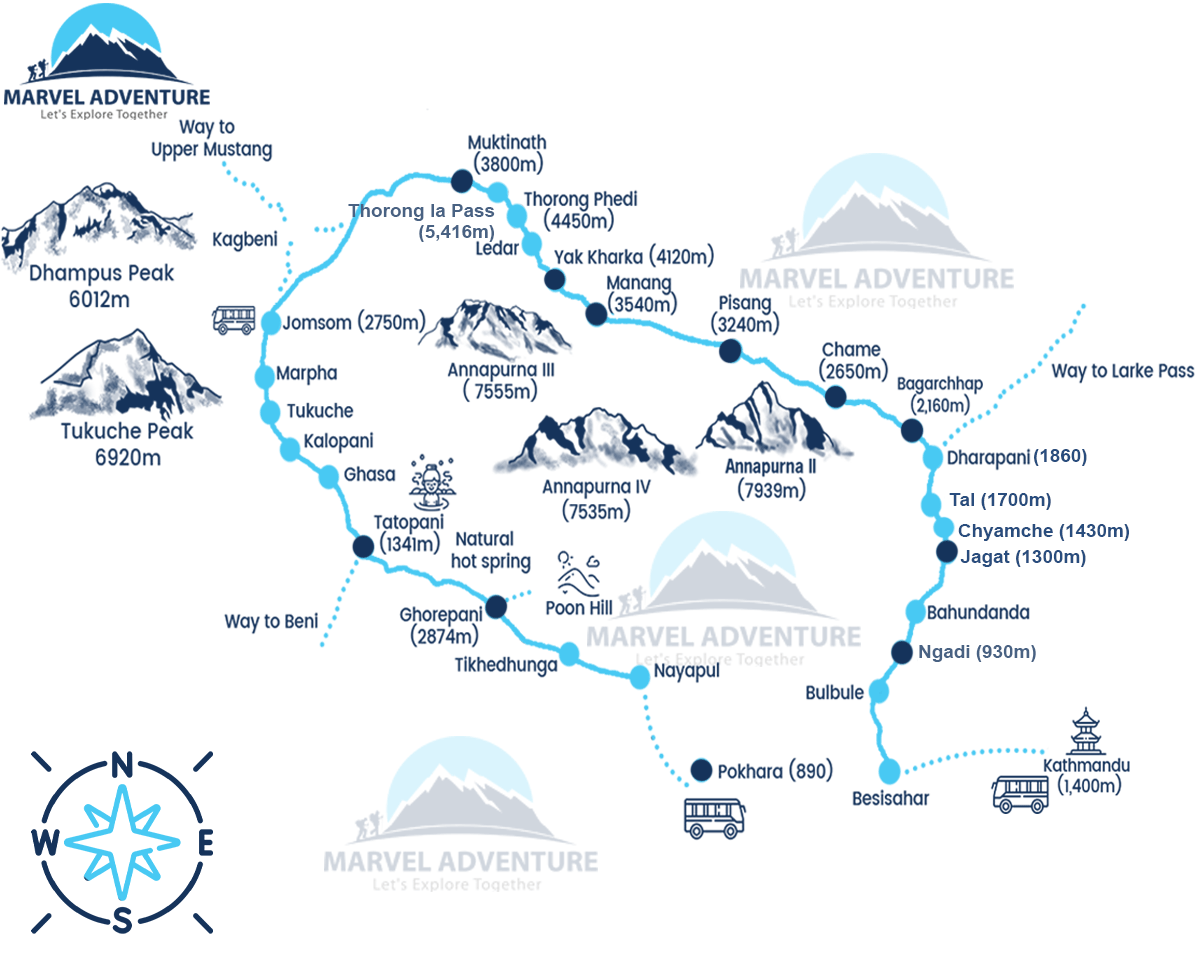
Your general Annapurna Circuit Map follows the following itinerary route. The overall itinerary plans may vary depending on the duration of the package, route, and highlights exploration part of the adventure.
However, your standard 14 Days Annapurna Circuit Trek follows the following route.
Day 01: Drive from Kathmandu [1,400 meters/ 4,593 feet] to Ngadi [930 meters/ 3,051 feet]
Day 02: Trekking from Ngadi to Chamje [1,410 meters/ 4,625 feet]
Day 03: Chamje to Bagarchhap [2,160 meters/ 7,086 feet]
Day 04: Bagarchhap to Chame [ 2,710 meters/ 8,891 feet] trek
Day 05: Trekking from Chame to Lower Pisang [3,240 meters/ 10,629 feet]
Day 06: Lower Pisang to Manang [3,540 meters/ 11,614 feet]
Day 07: Acclimatization and exploration day at Manang
Day 08: Trekking from Manang to Yak Kharka [4,120 meters/ 13,517 feet]
Day 09: Yak Kharka to Thorung Phedi [4,560 meters/ 14,960 feet]
Day 10: Trek from Thorung Phedi to Muktinath [3,802 meters/ 12,473 feet] via Thorung La Pass [5,416 meters/ 17,769 feet]
Day 11: Drive down to Tatopani [1,190 meters/ 3,904 feet] from Muktinath
Day 12: Trekking from Tatopani to Ghorepani [2,750 meters/ 9,022 feet]
Day 13: Ghorepani to Poonhill [3,210 meters/ 10,531 feet] trek to Ulleri (2,050 meters/ 6,725 feet] and drive down to Pokhara [823 meters/ 2,700 feet]
Day 14: Pokhara to Kathmandu drive
This is the standard package we offer. However, we do have other short itineraries you might be interested. We have other 8 Days, 10 Days, and 12 Days Annapurna circuit trek packages.
Overall Trek Overview
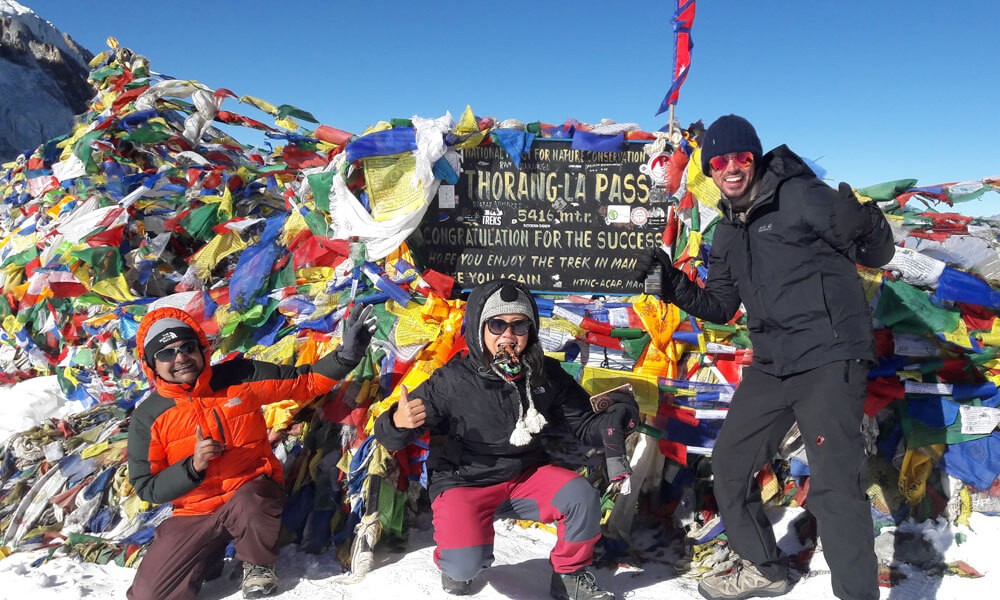
Depending on the type of package, either you start your Annapurna Circuit Trek with a drive from Kathmandu to Ngadi or Chame. The loner variant of the circuit trekking package also includes a sightseeing day at Kathmandu.
In your Ngadi route Annapurna Circuit Map, you will follow the gradually inclining trail towards Bagarchhap, Chame, and Lower Pisang. The destinations in this trekking route that are above the Lower Pisang are the high-elevation sections of this trek.
So, you will make your careful ascend to Manang and take a rest day here to acclimatize properly at the rising altitude. It is necessary to acclimatize properly here to avoid the risks of altitude sickness.
After acclimatizing properly at Manang, you will move along other high-elevation jump points of this adventure, like Yak Kharka, Thorung Phedi, and Thorung La Pass, the highest elevation jump point of this circuit trek.
Then, you will make your descent toward Muktinath, a major religious landmark for Hindus and Buddhists. Moving further in your descending trails, your next journey will then bring you down to the natural hot springs of Tatopani.
However, your journey doesn’t end just here in this circuit trek. In this exciting route of the Annapurna Circuit Map, you will also explore the major highlight of the Annapurna region, Poonhill. This hiking point in the Annapurna region is popular for the magnificent views of Annapurna, Dhaulagiri, Machapuchare, Nilgiri, Lamjung, and other surrounding peaks.
This is a side detour in your Annapurna Circuit map; after the hike to the Poonhill, you will then trek down to Ullleri. You will take a convenient vehicle from Ulleri to Pokhara. Your circuit trekking adventure will either end at Pokhara, or your package will include a drive back to Kathmandu.
Accommodation During Trek
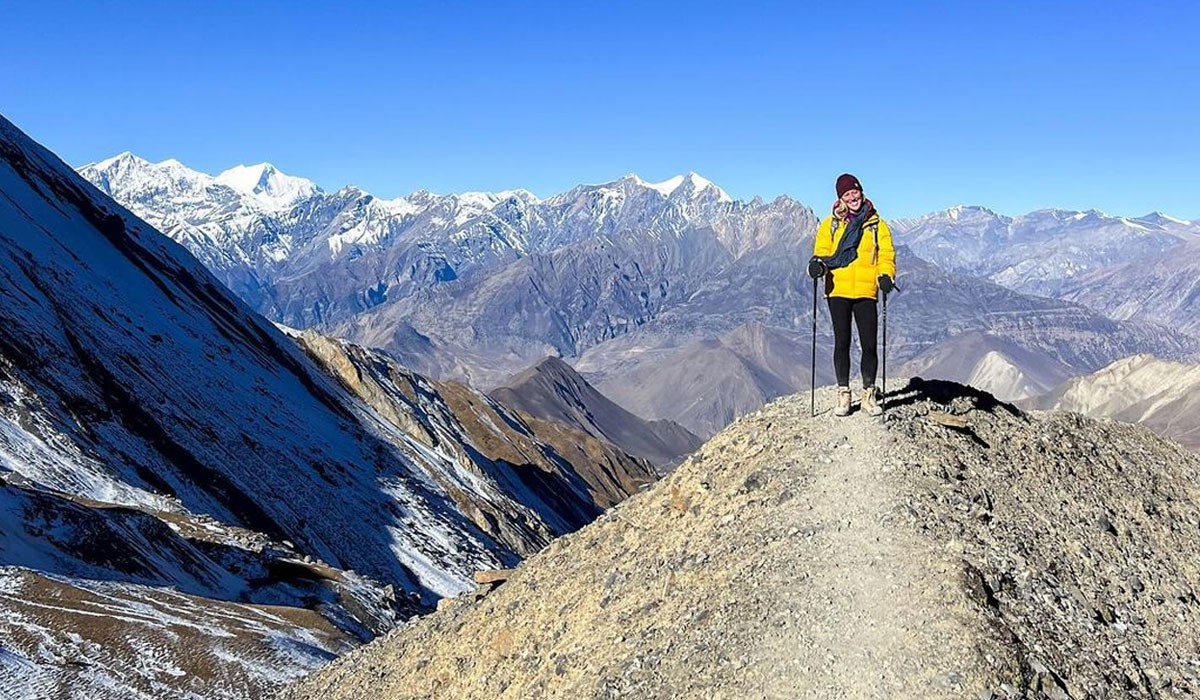
Your standard trekking package will follow the classical Annapurna Circuit Map and move along the designated route across teahouses/lodges. Depending on your trekking package, you will also spend a few nights at the star hotels in Kathmandu and Pokhara.
In your regular 14 Day package will include 12 nightsat teahouse/lodge accommodation and 1 night at a luxury hotel in Pokhara before driving back to Kathmandu. You will be able to enjoy a luxurious level of service during your stay in big cities like Pokhara and Kathmandu.
However, the services and amenities along the trekking route are not on the level of a star hotel. Still, as Annapurna Circuit is the second most popular trekking region in the country, the accommodation facilities are well-developed compared to other remote high-altitude explorations. You will also be able to select a luxurious package for a more comfortable experience on this trip.
On your regular package, during your stay at the teahouses, you will receive a moderate level of service. Most of the rooms in the standard trekking packages have 2-3 adjacent beds. The rooms are warm and cozy; you will also receive mattresses, blankets, pillows, towels, etc, as amenities during your stay.
The bathroom facilities depend on the region of the trek. At the lower altitudes, there are Western-style bathroom facilities with showers. However, as you move to higher elevation points, the traditional style bathroom takes over. For showers, buying a hot bucket of water is the best alternative.
What About Food and Beverages in the Annapurna Region?
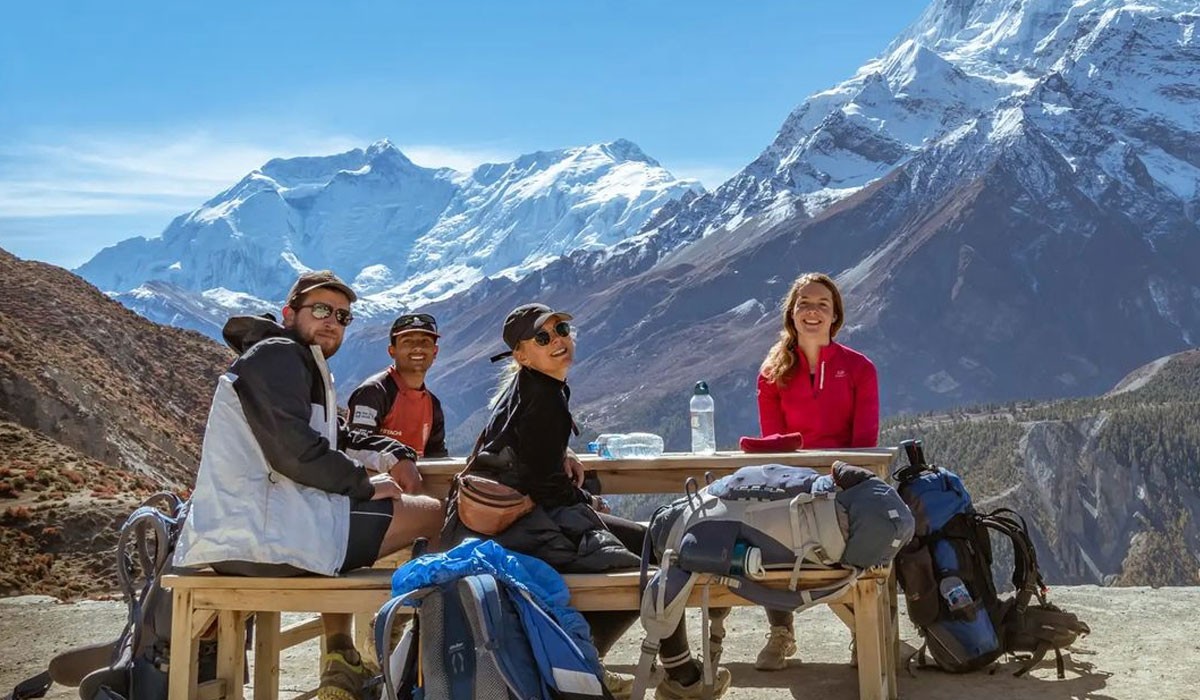
As in your Annapurna Circuit Map, you will follow the classical route with teahouse top points in your trekking route; you will be able to enjoy warm and healthy meals during your trek. In this popular teahouse trekking experience, you will be able to enjoy delightful local dishes, other Asian cuisines, and popular Western menu items.
Although the services are not top-tier like a star restaurant, the food along your trekking route is pretty decent. They are prepared with healthy sourced ingredients and are fresh, so in some places, they even taste better than restaurants.
Food Menu for Breakfast: Bread, eggs, toast, jam, butter, honey, milk, tea, coffee, juice, oats, pancake, cornflakes, pudding, fruits, chapati, paratha, muesli, etc
Food Menu for Lunch and Dinner: Pizza, burger, sandwich, spaghetti, pasta, steak, dal bhat tarkari, dhindo, gundruk, chhoyela, thukpa, tsampa, shyaphale, soup, salad, momo, chowmein, etc
Beverages
Like the wide range of food options in your trekking route, you will also get the opportunity to relish delightful-tasty beverages during your trek. You will be able to taste the region-specific specialties and local alcoholic beverages during your trek.
In addition to that, you will also be able to drink fresh juice, canned drinks, cold drinks, and hard drinks. Annapurna Circut trek leads to the high elevation points of the region, so it would be wise not to consume alcohol while trekking. Also, alcohol in your system is known to affect the overall acclimatization process.
For drinking water, you can rely on the clean water stations along the trail. We don’t recommend mineral bottled water and canned drinks during your trek as they can severely affect the environment. You should at least meet the daily hydration quota of 3-4 liters of water during the trek to minimize the risk of altitude sickness. But don’t forget to purify your water before consuming it.
Best Times to Trek
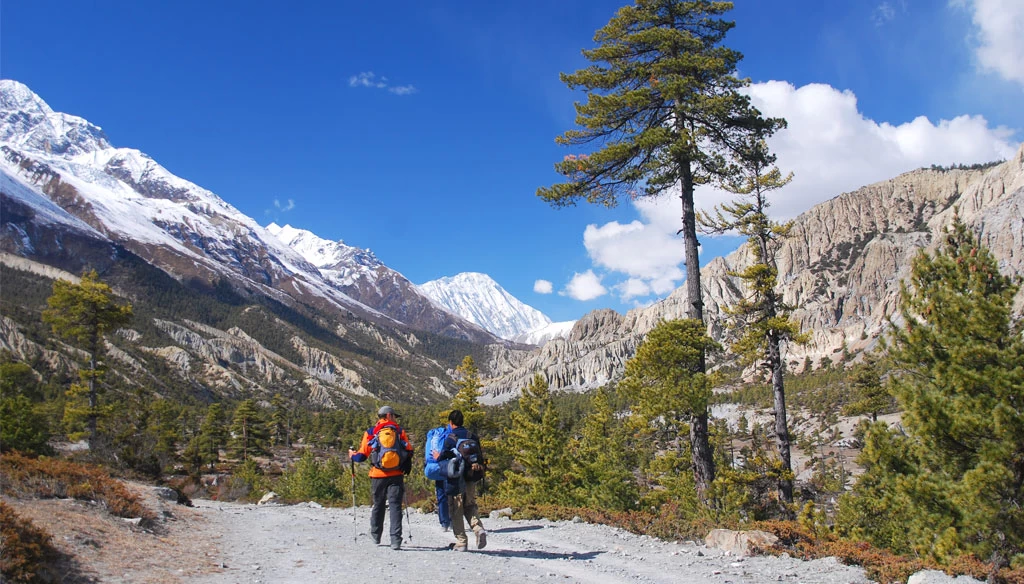
Undoubtedly, the spring and autumn seasons are the top choices when it comes to exciting experiences in the Himalayan region. Both of these seasons have their own charm and offer the most favorable climatic conditions for an unforgettable adventure.
You might be familiar with how the spring season awakens the true allurement of nature. This magic also spread all over the Himalayan region during this peak season of mother nature. You will feel blessed to walk through the mesmerizing landscape brimming with life.
The colorful flowers, chirping birds, warm temperatures, clear views, and opportunity for wildlife exploration add further magic to your exploration.
However, if you are planning your adventure in autumn, this fascinating fall season also won’t disappoint your exploration. The autumn season in the Himalayas is known for its mild temperature (not too hot nor too cold) and clear, unobstructed views of the mountain.
Similarly, the festive vibrance and the delicacies of the harvest are some other benefits of doing this circuit during the autumn season.
How Difficult is the Annapurna Circuit Trek?
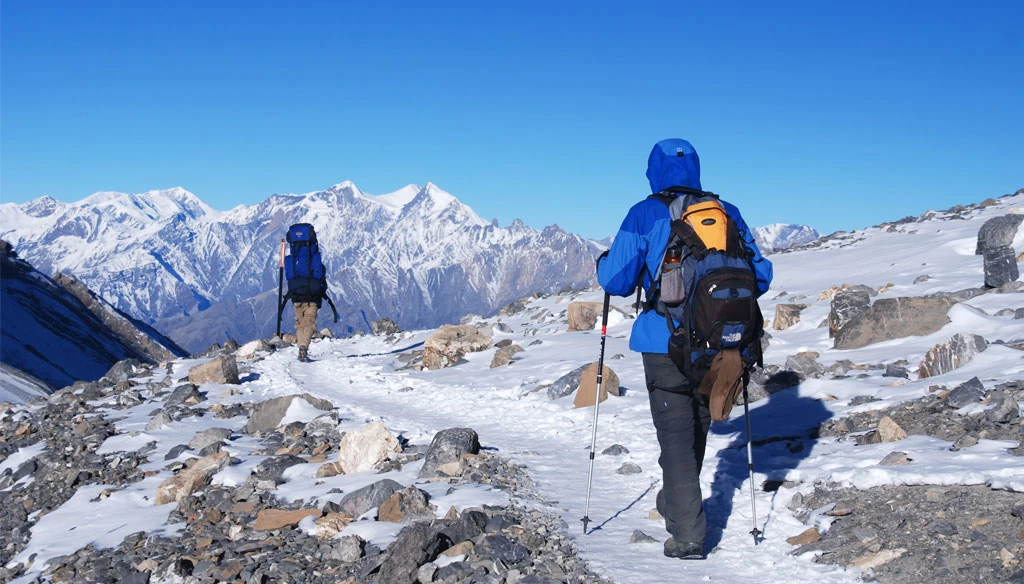
If you are considering doing this Himalayan adventure and are curious about the overall difficulty level of the Annapurna Circuit Map. Don’t worry; this remarkable exploration isn’t strenuous or challenging. The overall difficulty level of the Annapurna Circuit is on just t a ‘moderate’ scale.
Even if you are a completely new beginner to Himalayan trekking, this adventure won’t be too difficult for you. If you prepare right for the trek and stay determined, you will be able to conquer this mainstream trekking route with ease.
However, this iconic trekking adventure is still a Himalayan exploration. So, there are definitely some challenging parts of this adventure that you should be prepared for. Still, due to their milder nature, they won’t be as challenging or strenuous as other remote adventures.
Altitude Sickness
Acute Mountain Sickness (AMS) is one of the major concerns when it comes to high-altitude adventures. Once you start ascending over an altitude of 2,500 meters, the risks of altitude sickness also start to increase.
You will start your trekking adventure from Ngadi (9300 meters) and move along the high-altitude destination to the highest elevation jump point at Thorung La Pass (5,416 meters). So, you need to train and acclimatize effectively to altitude sickness.
Trekking Duration
During the Annapurna Circuit Trek, you traverse across the overall trekking distance of 160 km to 230 km (100 miles to 145 miles). Depending on the route taken and exploration of the highlights, you will cover a significant distance during your exploration.
So, you will have to trek for about 6-7 hours during each trekking day on average. Even though it is slow-paced walking, trekking for such long hours and at rising altitudes can be physically draining if you are not prepared for it.
Weather Factors
It's no new news that the high-altitude climatic conditions in the Himalayas are not always predictable. Although the climatic conditions are stable during the peak seasons, like autumn and spring, if your adventure is set for the off-seasons, the journey can be quite burdensome.
The winter season (December to February) is known for its freezing weather. You cannot possibly imagine doing this trek during the winter without heavy clothes and gear. Similarly, monsoon (June to August) is known for the heavy rain and slippery trails. Further, threats of natural disasters like floods and landslides are all-time high during this season.
Remoteness
Annapurna Circuit Map follows the remote and isolated trails in the Himalayas. The transportation and other infrastructural development are quite limited in the high Himalayan region. So, during your circuit trekking adventure, you shouldn’t expect high-end services.
You shouldn’t expect the amenities like an urban gateway destination. The Internet and other communication modes are also not developed at high altitudes. So, you will have to prepare yourself for the isolation and take this adventure as a way to reconnect with nature.
Planning and Preparation for the Trek
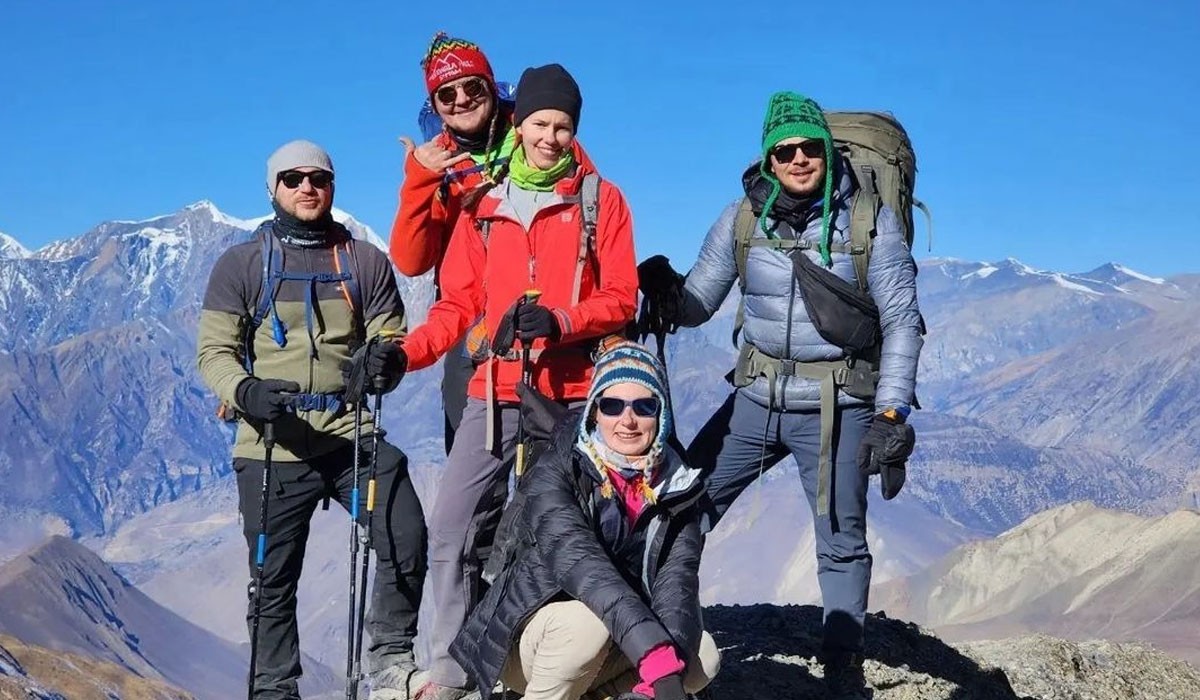
It is necessary to plan ahead if you are looking to maximize your experience during this exciting circuit trekking adventure. The first key factor you should consider while doing this trek is finding the appropriate season.
We recommend the peak seasons if you are new to the Himalayan adventure. If you are a veteran of high-altitude adventures and looking for thrills, you can go for the winter season. The winter season covers the entire higher trekking trail with sparkling snow blankets, and the Himalayan region is at its pinnacle.
However, if you are planning your trek for monsoon, you should pack the right gear and stay updated with the weather forecast. The discount rates are pretty high during the off-season, and you might also extra amenities along with your package.
Preparation
Training for the trek certainly helps to make the experience far more enjoyable and less draining. You will trek for long hours while following the Annapurna Circuit Map and move along the high-altitude parts of the trek carrying your backpack.
So, strength and endurance training should be the first part of your preparation. You can consult with trainers or do practice hikes to understand what you can expect during the actual trek. Doing a throughout physical assessment will help you understand what aspect you need to improve for the trek.
We recommend that you to at least train 4-6 weeks prior to your circuit trek. This way, you can easily fit the training period into your daily schedules, and your body will also get accustomed to the physical activities.
Strength and Endurance Training Exercises: Pull up, push up, plank, squat, deadlift, calf raise, lunges, overhead press, upright row, leg extension, pilates, etc
Cardiovascular Exercises: Cycling, jogging, dancing, stair climbing, jumping ropes, swimming, high knees, jumping jack, etc.
What About Health and Safety?
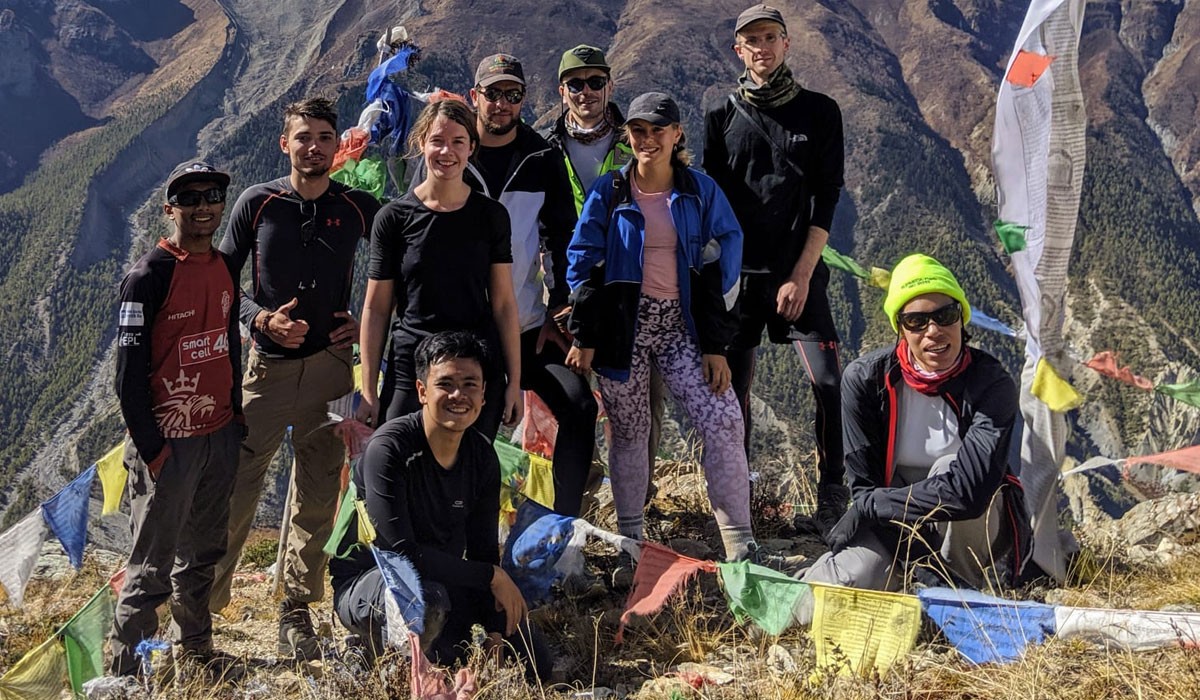
Your health and safety are our topmost priority as you entrust your entire adventure to us. We here at Marvel Adventure also make sure to fulfill every promise and strive for your best experience during this circuit trek.
During your Himalayan adventure, you will be guided by our treasured guides, who are government-certified and well-trained. Every single one of our guides is proficient in English communication and has also received training for the high-altitude response.
We will check your physical status during each day of the trek and use an oximeter to determine the oxygen saturation level. Your guide will report day-to-day activities and the health conditions of the expedition team to the head basis on a daily basis.
In case of any health and other safety-related issues, your guide will coordinate properly with the team at the head office. Then, appropriate measures will be taken to resolve the issues. So, you don’t need to worry about anything during your trek; just relax and enjoy the exploration, trusting us to take care of everything.
What Permits Do You Need for Annapurna Circuit?
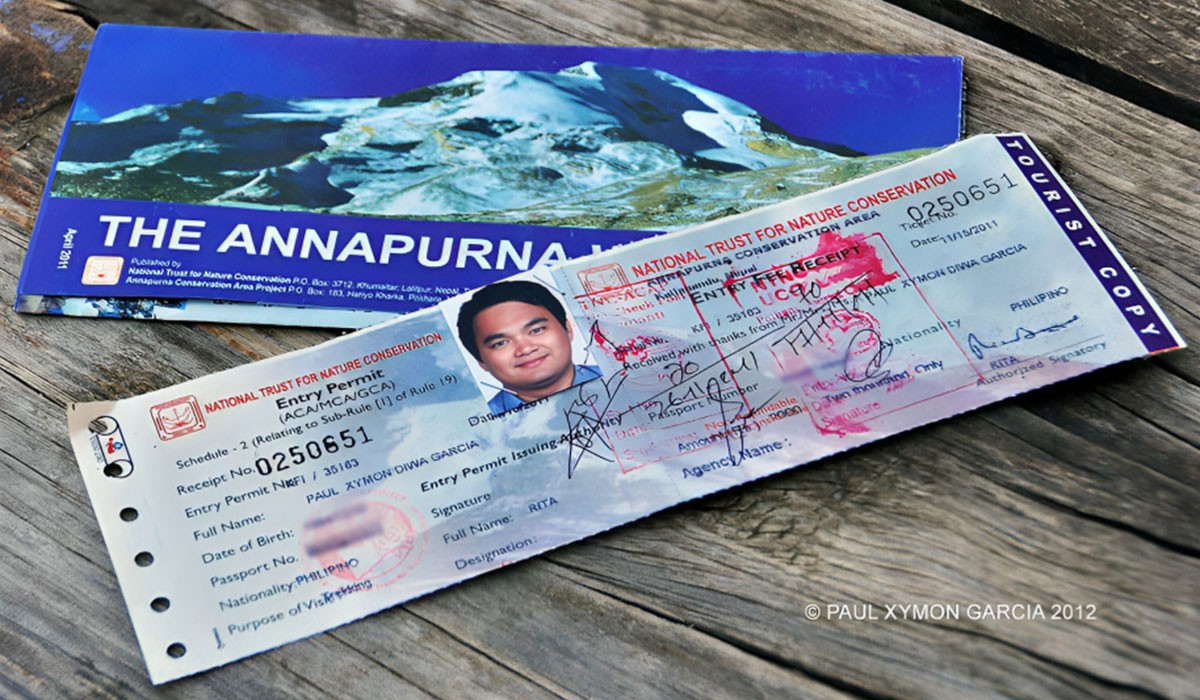
Permit is a very essential part of this Himalayan exploration. As you traverse across the protected areas of the region, you need to have permits to trek in the area. If by any chance you are caught doing this trek without permits, you will be liable for extra fines on top of paying the actual costs of the permits.
You will require two permits to do the Annapurna Circuit Trek.
- Annapurna Conservation Area Permit (ACAP)
- TIMS Card (Trekker’s Information Management System)
Both of these permits are mandatory to do this trek. Annapurna Conservation Area Permit, which costs around US$ 30, is applicable for the entire Annapurna region. You will be able to visit any part of the mainstream trekking region if you have this permit.
TIMS Card which costs about US$ 17, on the other hand, is an absolute requirement if you are doing high-altitude adventure in Nepal. You will need this permit to do a trek in the country regardless of the region.
This permit was made mandatory by the Nepali government on 1st April 2023. With the help of this card, the authorities can keep track of your route, and it also enhances the safety features. In case of emergencies, the authorities can easily track you down and conduct search and rescue operations.
Read this next:
Is Annapurna Circuit Right for Me?
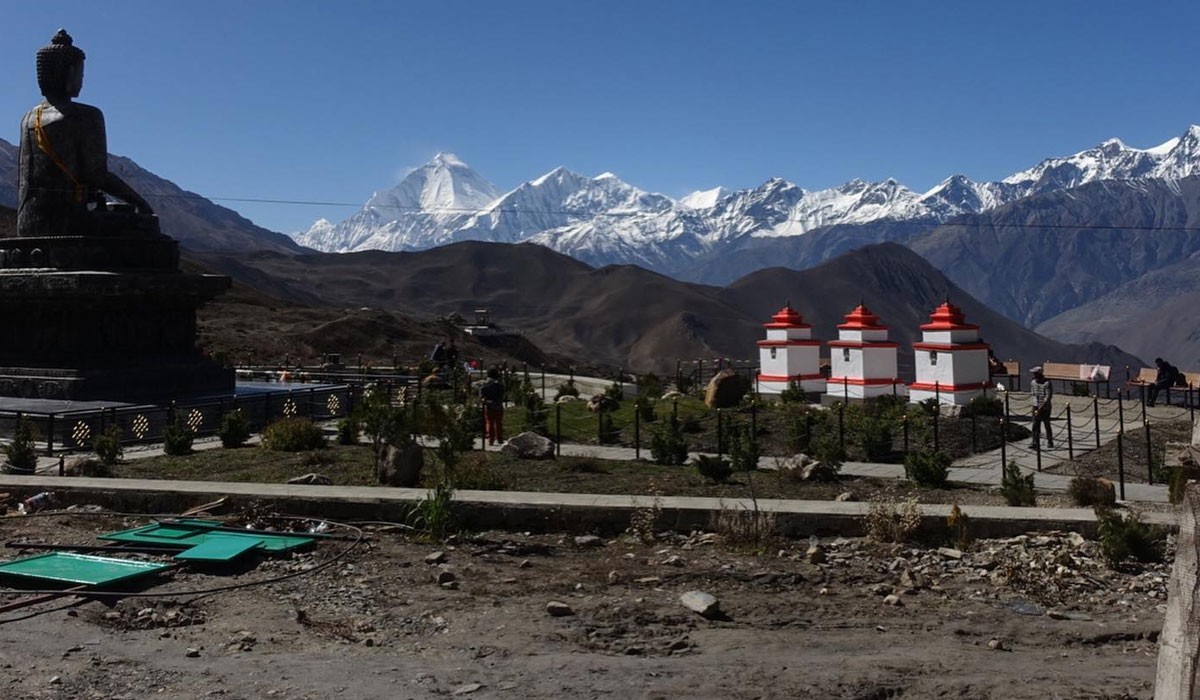
If you are passionate and determined about something, you can easily complete it. With enough willpower, people have even scaled the highest peaks in the world. So, doing the trek with few high-elevation jump points is in no way a major hurdle like you would expect.
Yes, there are some difficult factors in this adventure, but none of them are strenuous and pretty much on the milder side. If you are willing to put some effort into the training part, you will be able to easily overcome more than 80% of the challenges.
The success rate of the trek, which is about 98% to 100%, provides a proper insight into the overall difficulty level of the adventure. So, if you are really interested in this fascinating exploration of the foothills of the Himalayas, you don’t need to have second thoughts. Just go for it!
Some Helpful Insider Tips for the Annapurna Circuit Trek
- Don’t skip the preparation; it is the key factor to overcoming the difficulty level of the trip
- Take it slow and try to reach the daily hydration quota (3-4 liters)
- Monitor your diet and eat a balanced diet
- Don’t forget to pack the medications for altitude sickness like Diamaox and Nifedipine
- Pack the right clothes and gear to keep yourself warm
- Communicate with your guide in case of any difficulty or inconveniences
- Lower your expectations, don’t expect top-tier luxury
- Carry enough cash for snacks and shopping
- Know your limit and pay attention to your body language
- Respect the local culture and traditions
- Finally, have fun and enjoy the experience


